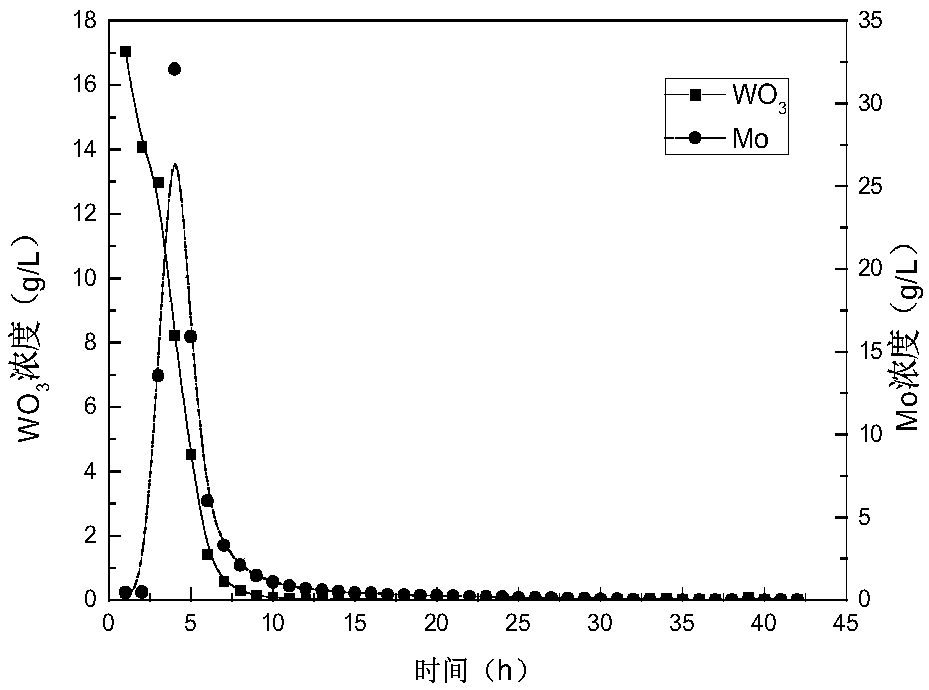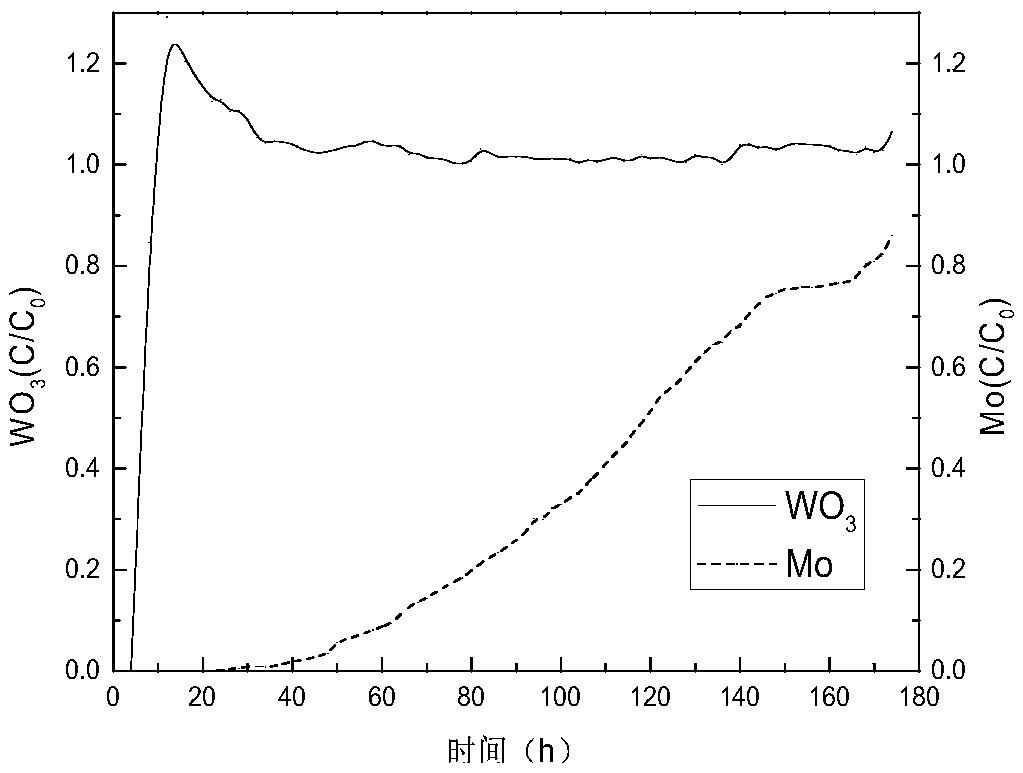Method for separating molybdenum from tungstate solution through ion exchange
An ion exchange method and tungstate technology, applied in the field of rare metal metallurgy, can solve problems such as adverse effects of the process, deterioration of the production environment, complex mineral raw materials, etc., and achieve good desorption and separation effects, safe and convenient measurement, and easy desorption process.
- Summary
- Abstract
- Description
- Claims
- Application Information
AI Technical Summary
Problems solved by technology
Method used
Image
Examples
Embodiment 1
[0033]The feed liquid is the prepared molybdenum-containing ammonium tungstate solution, which is vulcanized in advance with a vulcanizing agent. The vulcanization conditions are: prepare 5L containing WO 3 100g / L, Mo1g / L simulated feed liquid, add 148g of thiocyanate as vulcanizing agent. The vulcanization temperature is 70°C, and the pH of the feed solution is adjusted to 9.5 after sulfation. The sulfuration rate was tested by extraction method to be 99.5%. Take 20ml of feed solution each time, put 5ml of HBDM-1 resin in a beaker, and adsorb at room temperature for 1 hour. From the adsorption results, it can be seen that the adsorption rate of tungsten and molybdenum varies greatly with pH. When the pH is 9.25-9.5, the adsorption of molybdenum The adsorption rate reaches the maximum, reaching 78.79%, while the adsorption rate of tungsten increases with the decrease of pH. It can be known by calculation that the separation coefficient of tungsten and molybdenum can reach 3....
Embodiment 2
[0035] The feed liquid is the thiolated molybdenum-containing ammonium tungstate solution prepared in Example 1. Take 20ml of the feed liquid and 5ml of HBDM-1 resin in a beaker for adsorption for 1 hour. The adsorption temperature is controlled to be normal temperature (25°C)~ 60°C. It can be seen from the experimental results that the adsorption rate of tungsten and molybdenum increases continuously with the increase of temperature, and the calculation shows that the separation coefficient is continuously increased. At room temperature, the adsorption rates of tungsten and molybdenum are 27.19% and 60.63%, respectively. Taking into account the actual economic factors and experimental results, the separation requirements of tungsten and molybdenum can be met at room temperature.
Embodiment 3
[0037] The feed liquid is the thiolated molybdenum-containing ammonium tungstate solution prepared in Example 1. Take 20ml of the feed liquid and 5ml of HBDM-1 resin each time, and adsorb at room temperature. The adsorption time is 5min to 2h, respectively. From the results, it can be seen that It was found that with the extension of the adsorption time, the adsorption rate of tungsten and molybdenum continued to increase, and the calculation showed that the separation coefficient continued to increase, indicating that the longer the adsorption time, the better the separation effect of tungsten and molybdenum. After 2 hours, the adsorption rate of tungsten and molybdenum gradually tends to be stable and reaches an equilibrium state.
PUM
| Property | Measurement | Unit |
|---|---|---|
| separation | aaaaa | aaaaa |
Abstract
Description
Claims
Application Information
 Login to View More
Login to View More - R&D
- Intellectual Property
- Life Sciences
- Materials
- Tech Scout
- Unparalleled Data Quality
- Higher Quality Content
- 60% Fewer Hallucinations
Browse by: Latest US Patents, China's latest patents, Technical Efficacy Thesaurus, Application Domain, Technology Topic, Popular Technical Reports.
© 2025 PatSnap. All rights reserved.Legal|Privacy policy|Modern Slavery Act Transparency Statement|Sitemap|About US| Contact US: help@patsnap.com



